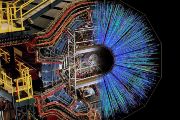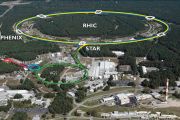
A significant step toward understanding the properties of space matter after the Big Bang
A significant step toward understanding the properties of space matter after the Big Bang
Thu Aug 31 13:12:12 CEST 2017

Czech scientists from the Nuclear Physics Institute of the CAS, CTU in Prague and colleagues from another twelve countries, who participated in the experiment STAR, have proved that quark gluon plasma is the liquid with the highest known vorticity.
The work was published in its first August issue by the prestigious journal Nature, which even put this result on its title page. “The significance of this discovery allows better understanding of the properties of space matter after the Big Bang and hence also its further development,” adds Doc. (Associate Professor) Michal Šumbera from the Nuclear Physics Institute of the CAS.
Microscopic drops of a new state of matter, existing only at temperatures 100,000x higher than the temperature of the sun’s core, were first observed in 2005 in collisions of two heavy atomic nuclei at the Brookhaven National Laboratory (BNL) in New York. The current measurements conducted there as well indicate that the plasma created by strongly interacting elementary particles, quarks and gluons have not only practically no internal friction but can be rotated at a rate much greater than can be observed with the strongest tornadoes or with the large red spot on Jupiter. The speed of its rotation significantly outstrips the existing record that had been held until now by nanoparticles of liquid helium nanoparticles.
The press release is available here.
Prepared by: Nuclear Physics Institute of the CAS and the Department of Media Communication of the Head Office of the CAS





